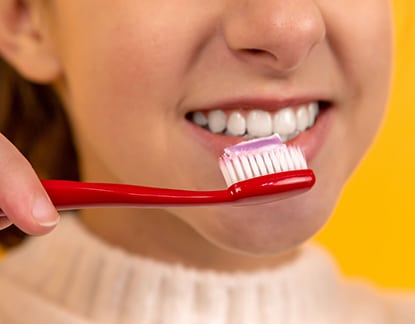The importance of brushing twice a day, flossing, and using mouthwash for an extra layer of protection is something that dentists emphasize to patients consistently. The reason for this is the amount of plaque and tartar that builds up in your mouth throughout the day as you consume more and more food. Find out how to get rid of plaque and remove tartar buildup.
What are Plaque & Tartar?
Plaque and tartar are both substances that can possibly be formed in your mouth as bacteria grows and develops. As mouth bacteria mixes with food particles dental plaque begins to form, creating a sticky film overlaying the affected areas. Plaque can form on top of any sort of dental work you’ve had done such as fillings as well. That is just one reason why it is important to have regularly scheduled dental visits, as your dentist will be able to spot when harmful plaque is forming and remove it.
When plaque stays on your teeth for an extended period of time it begins to harden, especially around the gum line, becoming what is known as tartar. This hardened plaque becomes coarse and is very harmful to your gums. This can eventually even lead to periodontitis (gum disease). Tartar usually must be removed by a dentist to remove the affected areas completely without harming your teeth or gums.
How To Get Rid of Plaque and Remove Tartar Buildup
Removing plaque is as simple as consistently brushing your teeth twice a day and flossing regularly. Flossing is distinctly important because of the chance for tartar to build up as it sits in between your teeth. Plaque can harden anywhere between around 1 to 3 days. You must be thorough and as fast as possible to prevent a trip to the dentist.
Tips on Preventing The Formation Plaque and Tartar In The First Place
Follow The Signs: Plaque that sits on your teeth and between your gums will slowly turn into a much bigger problem if not found first.
Signs include:
- Chronic Bad Breath – Plaque that forms can sometimes leave a foul odor stem from your teeth, leading to bad breath. This gets even more noticeable as it transforms into tartar.
- Painful or Bleeding Gum Areas – As mentioned earlier, tartar is especially bad for your gums and excessive buildup can lead to pain and bleeding in the affected areas.
- Weirdly Textured Teeth – Extensive plaque covering your teeth could make them feel weirdly slimy. Tartar will make your affected tooth feel rough, or some similarly distinct texture.
- Gooey Substance When Flossing – You may notice an extra layer of plaque “goo” on your floss if it has formed significantly in a certain area.
Bottom Line
Taking the proper precautions to prevent the buildup of plaque and tartar in the first place is the best option, but sometimes when life gets in the way brushing and flossing can be the least of your worries. When plaque starts to form it is very important to try to stop the process there, as once tartar forms your dentist will need to get involved to prevent an even more serious issue such as gum disease from occurring. It can be hard to tell what state your teeth are in on your own, so if you feel that something is wrong do not hesitate to contact your local dentist to figure out if they think you need to come in for an evaluation.





